#ricky d'ambrose
Explore tagged Tumblr posts
Text


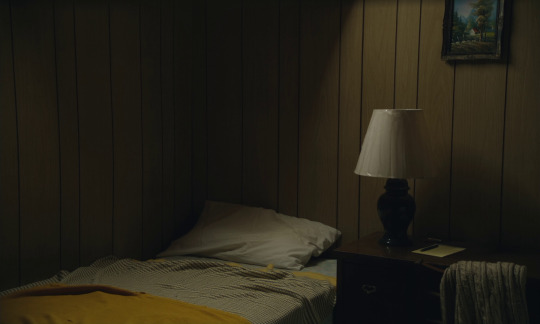
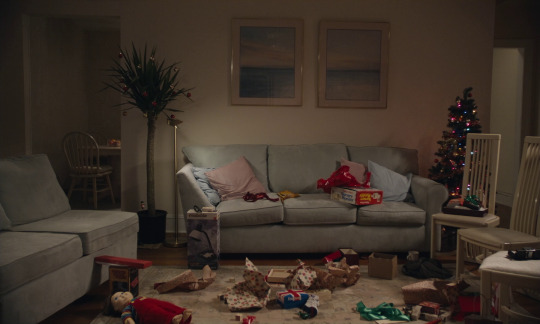
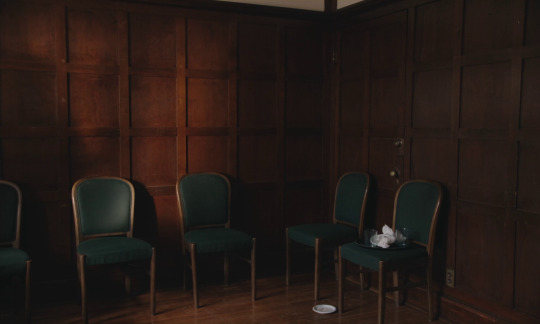
The Cathedral (Ricky D'Ambrose, 2021)
*Cinematic Studies is also on Instagram. Follow @cinematicstudies
215 notes
·
View notes
Text

"The International Jury of the “Luigi De Laurentiis” Venice Award for a Debut Film – Lion of the Future: #GianniCanova, #RickyDAmbrose, @barbararaquelpaz, @tayrussell and #JacobWong.
#LaBiennaleDiVenezia#BiennaleCinema 📷 @aleksander_kalka"
source: @labiennale (instagram)
2 notes
·
View notes
Text
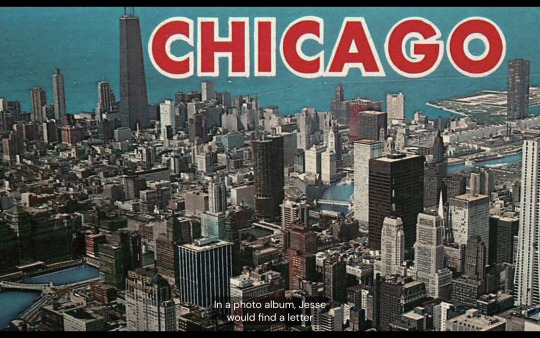
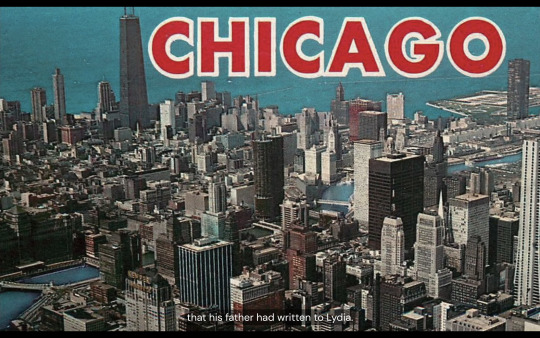
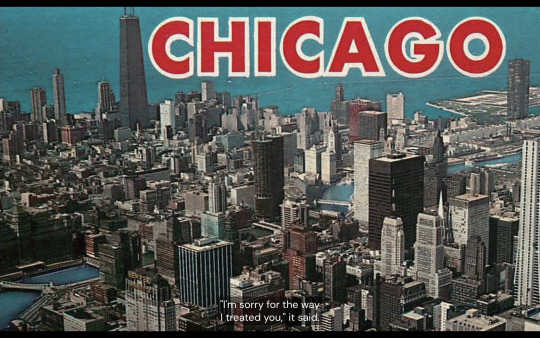
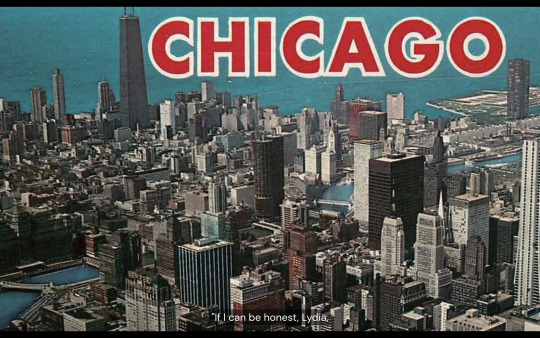
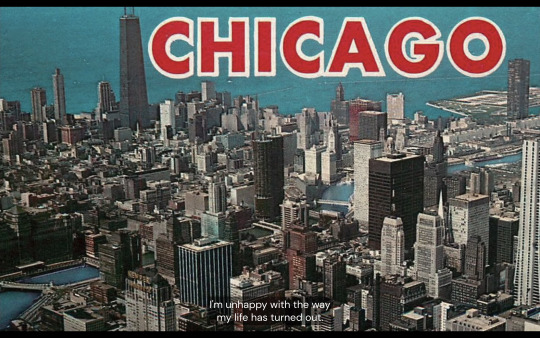
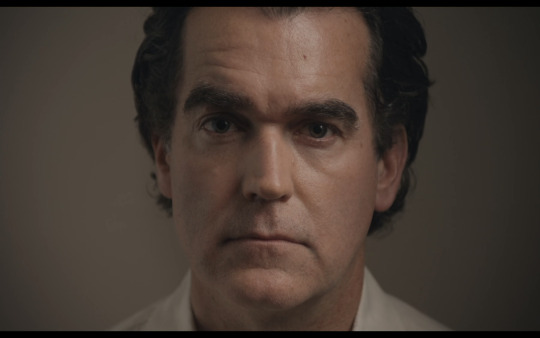
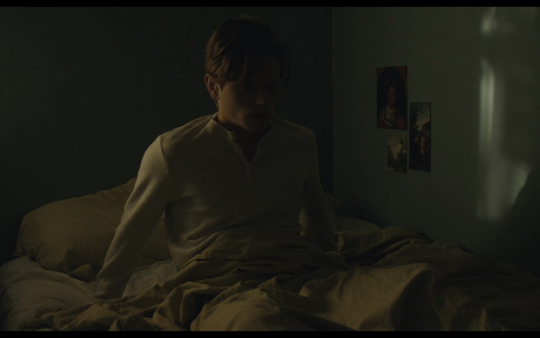
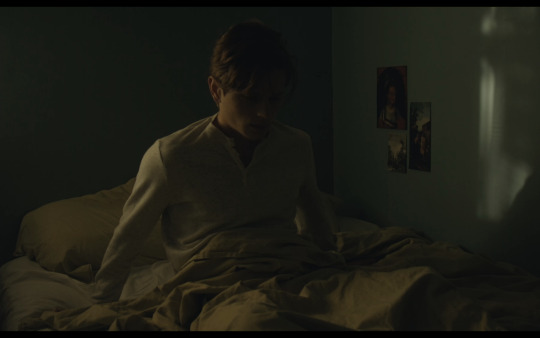
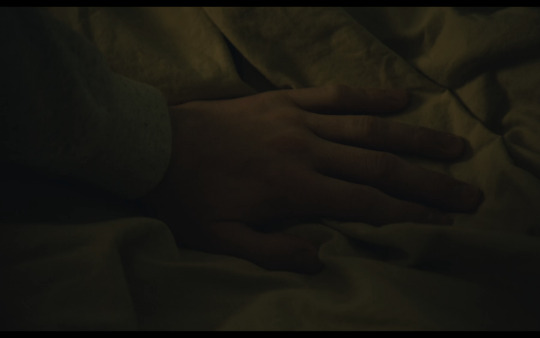
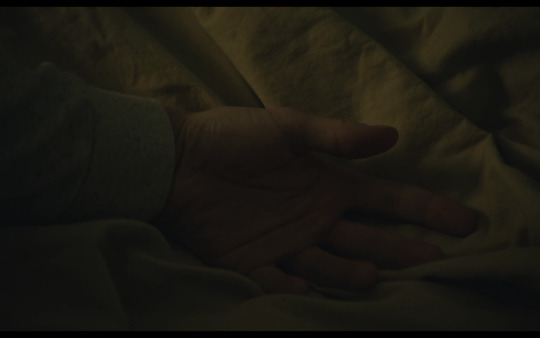
The Cathedral (2022, dir. Ricky D'Ambrose)
#The Cathedral#Ricky D'Ambrose#Brian d'Arcy James#something something about never truly understanding your parents#anyway this moment has not left my mind for the last 48 hours
11 notes
·
View notes
Text
0 notes
Photo

2022 (the year of “Soylent Green”) began with festival cancellations and general malaise, but ended with an outpouring of great cinema. Here are the favorite films we were lucky enough to catch (mostly) in-person. Seek these out at your local theater or at your earliest convenience. 1. The Novelist’s Film (Hong Sangsoo) 2. All the Beauty and the Bloodshed (Laura Poitras) 3. The Civil Dead (Clay Tatum) 4. The Eternal Daughter (Joanna Hogg) 5. Butterfly in the Sky (Bradford Thomason, Brett Whitcomb) 6. Return to Seoul (Davy Chou) 7. The Super 8 Years (Annie Ernaux, David Ernaux-Briot) 8. Crimes of the Future (David Cronenberg) 9. Showing Up (Kelly Reichardt) 10. Ghost Amber (Tim Grabham) 11. The Banshees of Inisherin (Martin McDonagh) 12. Learn to Swim (Thyrone Tommy) 13. Decision to Leave (Park Chan-wook) 14. Vortex (Gaspar Noé) 15. Actual People (Kit Zauhar) 16. Aftersun (Charlotte Wells) 17. Funny Pages (Owen Kline) 18. Tár (Todd Field) 19. Cane Fire (Anthony Banua-Simon) 20. Quantum Cowboys (Geoff Marslett) 21. Happer’s Comet (Tyler Taormina) 22. Sr. (Chris Smith) 23. Fire of Love (Sara Dosa) 24. The Tsugua Diaries (Maureen Fazendeiro, Miguel Gomes) 25. Neptune Frost (Saul Williams, Anisia Uzeyman) 26. Descendant (Margaret Brown) 27. The Cathedral (Ricky D'Ambrose) 28. Eternal Spring (Jason Loftus) 29. Sam Now (Reed Harkness)
#film#best of 2022#cinema#favorite#list#2022#films#the novelists film#all the beauty and the bloodshed#the civil dead#the eternal daughter#butterfly in the sky#reading rainbow#return to seoul#the super 8 years#crimes of the future#showing up#ghost amber#the banshees of inisherin#learn to swim#decision to leave#vortex#actual people#aftersun#funny pages#tar#cane fire#quantum cowboys#happer's comet#sr
32 notes
·
View notes
Text
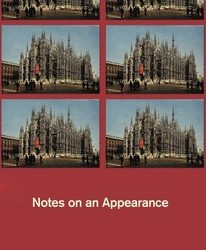
#203. Notes on an Appearance - Ricky D'Ambrose
0 notes
Photo
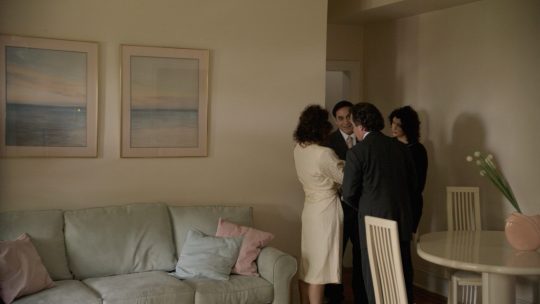
Seen in 2022:
The Cathedral (Ricky D’Ambrose), 2021
3 notes
·
View notes
Photo
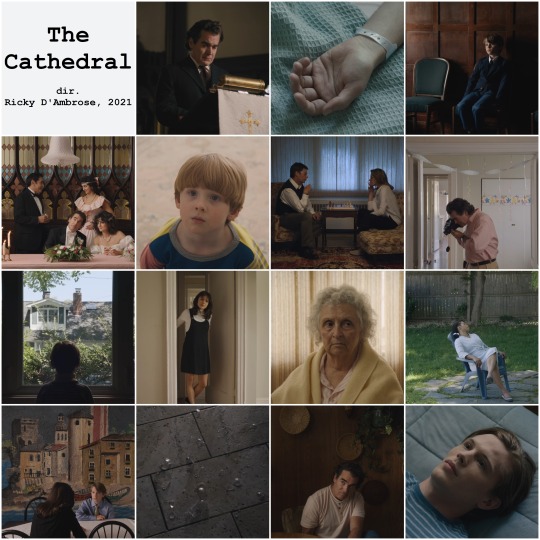
The Cathedral
directed by Ricky D’Ambrose, 2021
#The Cathedral#Ricky D'Ambrose#movie mosaics#Brian d'Arcy James#Robert Levey II#Steven Alonte#Monica Barbaro#Madeline Hudelson#Hudson McGuire#Henry Glendon Walter V#Candy Dato#Myxolydia Tyler#William Bednar-Carter
3 notes
·
View notes
Text



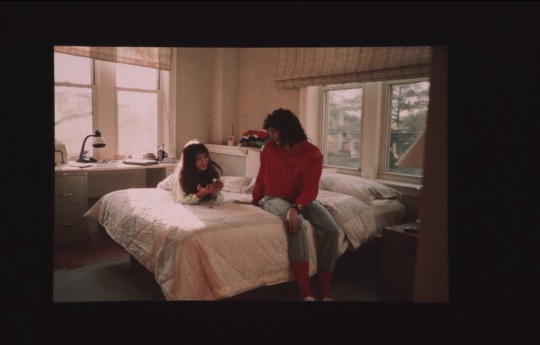
'The Cathedral' (Ricky D'Ambrose, 2021)
6 notes
·
View notes
Text
No Filter
On Notes on an Appearance
1.
In an essay on L’enfance-nue, Kent Jones claims that Maurice Pialat’s debut should be counted among the greatest debuts in cinema, and the fact that it is not is “indicative of nothing more than the overvaluation of progress. Which as Philippe Garrel, another underappreciated French filmmaker, once noted, has no place in the arts.” With Ricky D’Ambrose’s Notes on an Appearance, it is clear that progress is not on the agenda. The film is akin to the pitch sessions in The Player, albeit for a different social circle: “Get this…it’s Antonioni plus Bresson!” Yet, while aiming for these apparently lofty goals, it is closer to Woody Allen desiring the veneer of Serious Art by cosplaying Ingmar Bergman in his Interiors. Notes on an Appearance is Interiors for today’s New York critical establishment.
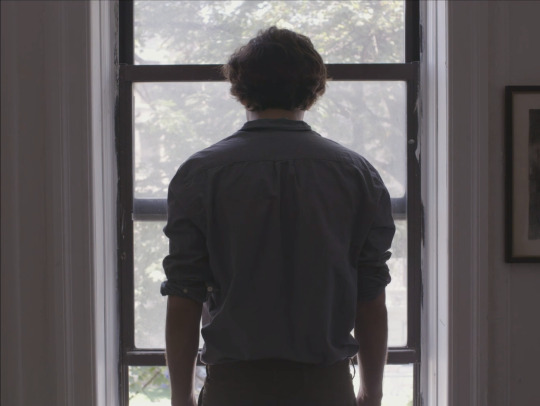
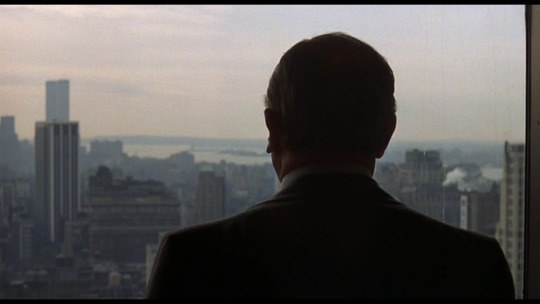
In his Notes Towards the Devaluation of Woody Allen, Jonathan Rosenbaum writes, “beyond a certain point there’s a question of whether this kind of emulation is being used as a tool for fresh discoveries or as an expedient substitute for such discoveries - a shield labeled ‘Art’ that’s intended to intimidate nonbelievers.” Movies tend to straddle the line between what is seen to be art or non-art, as Alain Badiou once stated (he has been published by Verso) and one of the powers of movies is precisely to redraw the lines between art and non-art. In his Instagram and the Fantasy of Mastery, included in the Berlinale press kit for his film, D’Ambrose sets up a dualism between Style vs Looks. It’s a dualism because, as Ray Brassier would say, it fails to explain the connection between the terms it distinguishes. A look is “easily seen without being sought out”, and examples include Instagram presets, some use of 16mm film, and it is aimed at “gratifying an existing idea of what a ‘70s movie or a ‘60s canvas or an ‘80s photograph is like.” Meanwhile, a style is “an involuntary guiding plan, or the transmission of an ineffable personal vision or sensibility into form.” Style for D’Ambrose, tells us “everything not about the world, but about the work”, and each artwork demands its own standards of judgment. He writes, “Who would demand that Charlie Chaplin’s Modern Times and Alain Resnais’ Le chant du Styrène should add up to a single, unanimous statement about factory work?” I don’t think anyone is claiming it should add up to a single statement, but, it is possible that it can add up to many. The contemporary distaste for quantification of any kind points to a lack of imagination regarding number and quantity as such. Artists today are so quick to abandon “the quantified self” in search for some sort of ineffability. To point to just one example: Erika Balsom writes on Laida Lertxundi and how her work shows how “life might be at once measured and unmeasurable”, and is “fascinated by structure while casting doubt upon its ability to capture the flux of life.“ What goes unsaid is the assumption that, as Dominic Fox puts it, “reality is fundamentally continuous, and discretization is an operation of ‘power’ [...] it takes individuation as always and everywhere the forcible division of that which is naturally collective and coherent.” The automation of looks, it would seem, erases a possibility of style, a style that is ineffable. But, to quote Mallarmé, “Over there, wherever it is, denying the ineffable, which lies.” Does the notion of a filter, of that which automatically creates a “look”, really create a site of danger for art? Who really uses these filters? People on vacation using a GoPro? Free time with your lover and adding a Huji filter at a concert? The Art Hoe Collective using filters on their selfies beside the “great works of art”? Or, if looks are not reducible to the image, what about trap drum kits, or any other presets available to any artist wanting to create a beat? What is really at stake is D’Ambrose’s distaste for any artistic labour that can be automated, because artists aren’t workers, but beings in search for the ineffable or any religious substitute. (Comically, at 20 000 USD this is an oxymoronic film, a ‘no-budget bourgeois picture’, because of course, 20 000 USD is nothing). But look at the clippings he designed, imitative of all sorts of New York magazines and journals - there is nothing in here that cannot be automated. One can easily imagine an app that can take any text and image and with some presets make it look like it was published by The New Yorker. But, since D’Ambrose himself worked on the documents presented, it is apparently not a look but an ineffable style. What is the actual experience of taking a photo and running the different filters through it? One can imagine taking a photo, and trying each filter, and even adjusting saturation, brightness, and contrast, or what have you. One may have even gotten lost in the passage through different settings, colours, and sliders. And then what does one do? One resets the image. And now the image appears to be already filtered - it lost its unfiltered quality. Many a time I would look at my initial image and find it almost unrecognizable. Was it really that drab? And yet on a second approach, what is revealed is the contingency of the technological look, that even the unaided image is already mediated. Or take it further, with FaceTune apps, where facial features can be changed in frame. When D’Ambrose says composition disappears, has he never seen a selfie? Or even the claim that the frame itself disappears: it appears most forcefully in the very movement between the different filters on an app, much like how the idea of the frame itself appears only at the juncture of the cinematic cut. At the very least, these apps and different tools can be part of a young person becoming an artist, learning about the different tools to use. Even more, the movement through filters allows the subject to see their very appearance as contingent, and not essential. What’s truly tiresome is the trend in arts writing that maintains a pejorative connotation on what can be engineered, anything that has to do with automation, data processing, and the like. It paints a monolithic portrait of the potentials and trajectories of technology. To put it like Jia Zhangke: “I feel that somehow we’ve overlooked many of the principles discovered by great masters like Eisenstein or even Leonardo da Vinci. This is because we can no longer be like people of those eras, who were versed in all branches of learning, who were immersed in science while undertaking a kind of religious quest for new forms. This inability has damaged the quality of our cinema.” This damaged quality can be reformed I think with a new confrontation with quantity, rather than a repetition of what came before. D’Ambrose closes his essay calling for “a new view” - but is it the case that the technology of automated looks may not have a relation to this new view? That it can be repurposed? He writes derisively on looks that “Canon or Apple can engineer”, and that rather than art born of an artist’s appetite, all we have left is the “mastering of the manufacturer’s rules”. Yet one can recall the rules of linear perspective in De Pictura as written by Leon Battista Alberti - there is nothing a priori unfree or unthinking about rule following. In fact, a renewed relation between rationality, vision, science, and engineering, being “versed in all branches of learning” may do better to produce a new view rather than a mere continuation of the European canon, yet again. D’Ambrose emphasizes a distance between himself and the characters in his movie, claiming he does not see them as intellectuals. But I find it difficult to take this assertion as true - any sort of critique of its milieu is canceled by his Instagram article. Published in The Nation and not The Onion, it is difficult to say the piece was written satirically, or in the voice of Todd or Karin. Thus we must take it at face value, a piece whose emptiness matches what is depicted on screen. The film features a fictional philosopher named Stephen Taubes, presented as a sort of combination of Paul de Man and Heidegger, complete with “Basic Writings” and “Late Notebooks”. He is presented as anti-Semitic, and an instigator of violence. But why use a photo of Jacques Rancière to represent Taubes? Rancière, a leftist philosopher of equality who sees art as a possible place of politics, where, as said in a supposedly parodic panel discussion, the sensible can be redistributed through art. Why is his image used to represent a “dangerous philosopher”, who appears like he’s a fascist like Heidegger, and then is published by the leftist publisher Verso? Why show the company publishing violent right wing texts with book jackets designed by D’Ambrose? It’s a typical attitude of an intellectual whose centrism conflates left and right extremes, one who finds solace in art against extremism as such, the beautiful soul who cannot see their own hand in the world. One can think it’s a harmless in-joke, that the Verso images are jokes as well, but one can speculate that Rancière’s desire for equality through art would irritate an author who critiques the automated looks available to anyone with a cellphone. It’s the sort of centrism that leads a cinephile to watch Straub-Huillet one week and vote for HRC another out of a sense of political realism. Must there be a unification of one’s artistic preferences and political beliefs? Probably not, but the fact that such techniques are so detachable makes it comparable to any filter or look. In the same way that Kent Jones always defends an artificial scarcity of narrative art against some fantasmatic onslaught of an avant-garde that never comes, D’Ambrose’s critique of looks rings hollow, a claim against technologies that automates artistic labour so one can shoot in Academy ratio and look Bressonian. Rosenbaum claims that it is impossible to simply apply a style like a coat of paint, but what is it about human beings working with technological tools that would bar this from happening? Finally, the author also writes that the creative today is typically “thoroughly urbanized, mainly white, typically heterosexual and male”, as if there are no creatives of colour, on Instagram, who model themselves based on an artist like Kanye West, who also calls himself a creative. Because for artists inspired by his work, what is it to be creative? It merely means that one can take part in music, fashion, architecture, technology, or whatever it is you please - that you can be a polyvalent human being involved in all sorts of practices and do not have to limit oneself to the most narrow fields of expertise. While the term creative is critiqued again and again, what is so clearly at stake for any youth who gravitates to the term is the idea of imagination itself, that there is more than that which merely appears, and this more is not a religious ineffable beyond, but something that can be reached through the discipline of reason, invention, technology, and recipes. When taste becomes a defining factor in making art, no one will attempt to make new recipes, for it will not fit the closed off tastebuds that we parade about as markers of supposed cultural superiority.
2.
“It concerns a search for a character who disappears, and the character disappears in a city in which there’s a group of young people, the Verso Books crowd, enchanted by this ideologue who’s coming to give a lecture. I do not want to make a political, sociological movie with a ‘statement’ about a “generation.”
- Ricky D’Ambrose in an interview with Steve Macfarlane
“The antithesis of criticism isn’t praise but cultural criticism, or, Art-Ed that turns works into sociogrist.”
- Richard Brody Of course, when a white filmmaker makes a film such as this, he can evade the realm of the sociological and the political, and instead be “philosophical”, extending a dialogue between images and sounds as such, or what have you. No critic would ever open a review on this movie with gentrification statistics. No, no, it’s more than that! We should not raise eyebrows at D’Ambrose having Verso publishing a right-wing author, it’s all parody - it’s not that D’Ambrose is a typical centrist conflating left and right, it’s that he’s a serious artist thinking about images, labels, looks, and the power, or lack of power, of contemporary art! It’s remarkable that, like a big blockbuster movie, any statement against this film can be reversed as some sort of faux self-critique. But here it’s not shallowness or opportunism, but the vanguard of New York filmmaking. In a Q&A session regarding his film, D’Ambrose claims that the lack of cellphones or computers or reference to technology “wasn’t a choice [...] it wasn’t something I was thinking about [...] it wasn’t a decision.” That is to say, the lack of technology in the film is “unintentional, like the weather,” just like art and taste in the apparent era of looks. For all the alarmist attitudes towards supposed dangerous authors, D’Ambrose’s avoidance and distance from technology is as retrograde as any of the worst clichés of Heidegger in his hut. And then in a recent screening in Toronto, he claimed he only chose Rancière for his look, and the fact the picture was in the public domain. Yes, with all the careful work making mock Verso covers, and the Rancière reference in the conference scene, from a screenplay written 10 years ago, the picture was just what looked good and happened to be in the public domain. Either he thinks his audience is stupid (he introduced the film as “an exercise in reading comprehension”), or he is playing dumb, but either way it’s typical of a white artist to act, or be, unknowing during a Q&A, and openly contradict their entire intellectual project, a project in this case that is against the unthinking decisions of what is most immediately available. The cast itself is populated by critics and curators, friends of the filmmaker. Nick Pinkerton writes that he felt he was perhaps the only person qualified to write on the film because he was the only New York critic not in the movie. Seeing the film immediately brought to mind Fanta Sylla’s coinage, that today we have “networking as criticism”. The looks will be critiqued, but not the network itself. In fact, even pitching to publications to critique the film was rejected as he either already wrote for the publication, or, as it was his first feature, it was decided that it would be uncouth to critique it with any harshness. One would think that if anyone can be critiqued, it would be a critic, but in fact the game of giving and asking for reasons is not to be played - reason is not a strong point of criticism today, but instead there are only ineffable suggestions that cannot be quantified, complicated experiences that continually repeat a skepticism in the possibility of knowing anything at all, a fake modesty that keeps everything in place. In 2017, Michel Hazanavicius made a film covering the ‘68 era of Jean-Luc Godard and Anne Wiazemsky’s life. Not a good movie by any stretch of the imagination, but what I found interesting was the way the movie unconsciously depicted Godard’s struggle as an artist: the film is full of the ��Godard” look of the early 60s films, but it is clear that the political moment covered could not be thought via that look. There is a necessity to go towards the Dziga Vertov Group period. To go on filming like it was ‘63 is nonsensical and doesn’t capture the historical realities of even 5 years later. And thus when you look at a film from 1972 that is 60 minutes long, intellectually exhilarating, and filmed mostly in one apartment, called Struggles in Italy, it is clear how much has changed. Created by the Dziga Vertov Group, it is a passionate and rigorous illustration of the ideas of Louis Althusser. To be blunt, I remember Filmmaker Magazine editor and New York-based film critic Vadim Rizov writing that all the characters in my film 88:88 are reading the same book, Badiou’s translation of Plato’s Republic. Yet, this was simply, empirically false: there were all sorts of different books in the film, and, despite most commentaries, not even exclusively of the continental persuasion. There is a tendency to assume that any intellectual seriousness towards books of philosophers, especially of politics, must be kept at a distance, or at a mocking tone, or, rather believe they are all one book. The presence of books outside of a grad school setting can only be some sort of fetish or showing off, as claimed by many critics who still feel the need to put out a yearly blog post of all the novels they read that year. Notes satisfies this tendency, as it can be at once an “intellectual film”, a “critique of the milieu of these intellectuals”, and a presentation of fictional students taking philosophy almost “too seriously” - much like the Woody Allen films that Rosenbaum has critiqued, whereby one can take part in feeling like an intellectual while still maintaining the air of being above intellectual matters themselves. This is a typical American tendency that sees intellectual maturity as that of sustained skepticism, yet is never able to become skeptical of skepticism itself. Skepticism as a shield, like “Art”, never a motor of discovery. In the gap between works like Struggles in Italy and Notes on an Appearance, one can sense a backwards movement, a relation of art and politics that is at the very least, pre-’68. That is to say, as if there were no crises of forms, we can simply return to the canon, and continue with ones favourite artistic filters. In his review of Notes, Richard Brody writes that in fact D’Ambrose’s intellectualism is a “comedic mask”, and his true subject is “the mysteries that elude dialectics and disputations” that is, the true subject, again, is something ineffable. However, despite all its ellipses, its so called ‘incompleteness’, the movie is absolutely clear. Phil Coldiron writes, “[h]is position is that, given the world, it is the tendency of those who see themselves as the leading edge of culture today to do nothing other than squander it.” I would agree but only add that both Instagram and Notes are further proof of this squandering.

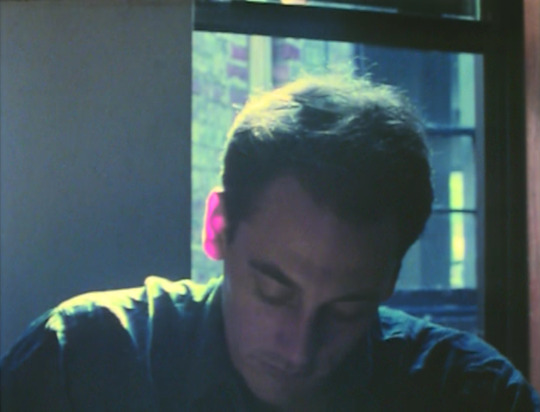

The DVD of Liability Crisis, Richard Brody’s first feature, a film which bears more than a passing resemblance to the look of Notes, contains an ‘original version’ of his film, a 57 minute cut. In the original version there is a bizarre scene that unfolds as such: Paul asks a black co-worker, “What do you do?” She talks about how she is a filmmaker, and when taking a filmmaker course in college, her fellow white students would ask “How did you come up with this, how did you put one image next to the other?” To which she replies: “I couldn’t say how, it wasn’t a rational process, I didn’t think about why I should do it, I just did it, I just did what felt right. They weren’t satisfied with that, the teacher wasn’t satisfied with that. That’s the difference between black people and white people. White people do things in an orderly, logical, rational manner. They think things out step by step, they… just 1 2 3 4. But black people, black people go with what feels right. They go with it. They go with the flow.” Today I think it is an imperative to reclaim rationality against this tired image of reason itself being white, since even the pseudo-emancipatory idea that people of colour are beyond reason is itself its own colonialist fantasy. The resurrection of reason should be decoupled by that other tired myth from the 20th century, that reason itself is totalitarian, when in fact it teaches that all claims are potentially revisable, and that we are responsible for what we think and do. Film theory can become a tool that is part of, and theorizes, the possibility of new workflows, new recipes, since criticism today is just networking plus an academic index of styles deemed worthy of repeating. This desire for a style over a look is just a redundant call for an American individualism fearful of getting lost in a world in which they are technologically illiterate. The reduction of all looks and automation to either neoliberal economics or art subtracted from any idea of tradition shows an inability to repurpose or rethink the given, and thus all that is left is to leap back to a given tradition. One should strive to be a little more creative than that. It’s a bad look.
133 notes
·
View notes
Photo

Film du Jour: Notes on an Appearance - 2018 - Ricky D'ambrose
2 notes
·
View notes
Text
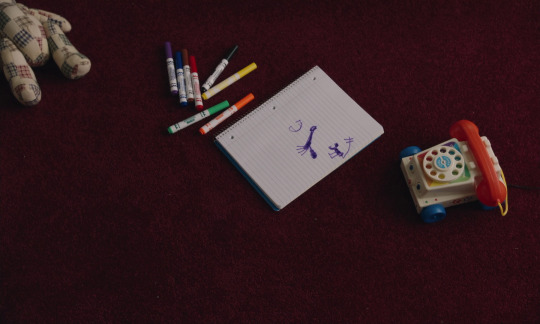
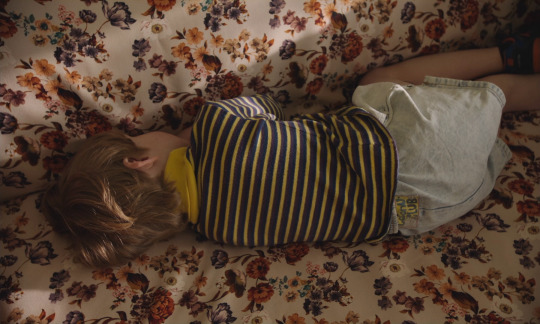

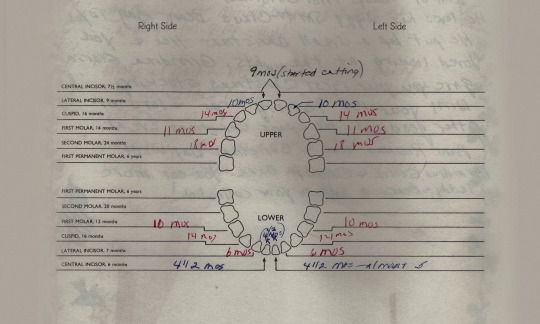
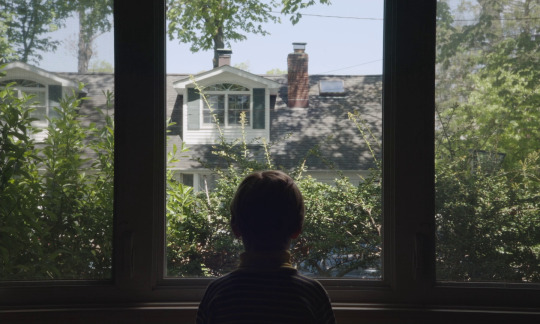
The Cathedral (Ricky D'Ambrose, 2021)
*Cinematic Studies is also on Instagram. Follow @cinematicstudies
58 notes
·
View notes
Text
Cine al menguar la pandemia: The Cathedral
Propulsado por la crónica de una saga familiar, el nuevo filme de Ricky D'Ambrose "The Cathedral" despliega ese estilo quirúrgico, desapegado, esquivo -que paradójicamente nos lo hace más íntimo, más cercano- que le distinguió en su notable debut "Notes on an Appearance" del 2018, y que ahora templa y afina para enfatizar la historia de Jessie, un chico que es en parte, supongo, su perfil autobiográfico.
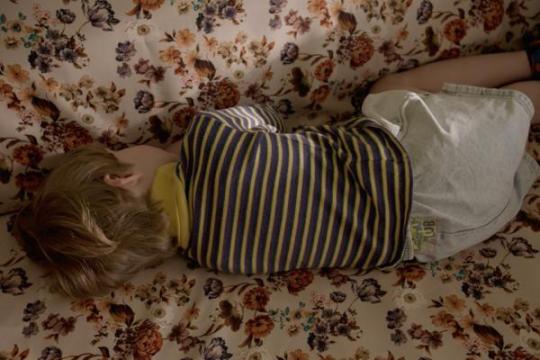
La cinta del director norteamericano es claramente atractiva en lo visual. Su modo de encuadrar y de editar los planos es esencialmente minimalista, pero bastante redituable en términos estéticos. Además D'Ambrose parece ser el rastreador más pertinaz de lo que podríamos llamar "la estética del abandono", o "la estética de la desolación" en sus tradicionales planos fijos sobre mesas o paredes (mesas de cumpleaños por ejemplo, con vasos y platos desechables sucios, a medio consumir, o paredes con cuadros anodinos o francamente yermas) que son como interludios que afianzan y ratifican su semblante formal austero, seco, breve, lejano. "The Cathedral" incluye una narración en off que al principio es como si sólo se estuvieran ilustrando las palabras con imágenes en movimiento. Sin embargo la mano de D'Ambrose se hace sentir en escenas que terminan siendo decisivas, como esa del pequeño Jessie que va a la casa de la abuela paterna, quien con cierta calma y tensión mezcladas se sienta a tomar su taza de té o café, mientras observamos el perfil del pequeño asomando hacia el exterior por la ventana, viendo la casa de enfrente. El director es capaz incluso de convertir una fiesta de cumpleaños en una premonición ominosa, aún cuando los invitados están cantando con cierto fervor el "Happy Birthday".
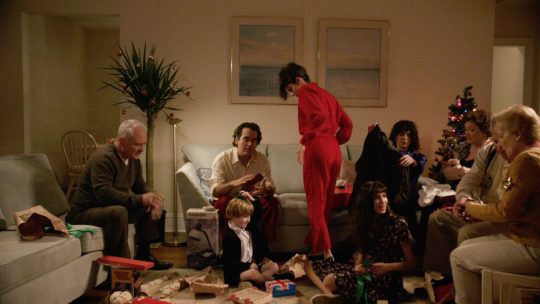
En esencia la saga que presenta la cinta es en todo caso la disolución y la desgracia de una familia a través de algo así como dos décadas de relaciones equívocas, con Jessie en el medio de la misma, aunque D'Ambrose no ofrece evidencias claras de la manera en que eso afecta al chico, sino que más bien va armando un discurso tangencial que deja fuera las reacciones emocionales básicas, y expone en cambio un boceto que hace referencia a las convulsiones que sacuden al mundo en ese mismo período de tiempo. Y así, con esa composición de planos brillantes, con el bien construido mapa de eventos fundamentales en el desarrollo de una visión adulta a partir de la de un niño, y con ese desapego formal a las emociones que al contrario de lo que proclaman en su superficie nos acercan y nos hacen entrañables su tono, sus maneras y sus formas, Ricky D'Ambrose se consolida, a mi manera de ver, como un autor distinguido, sensible y muy notable en el panorama contemporáneo.
0 notes
Text
Film after film: The Cathedral (dir. Ricky D'Ambrose, 2021)
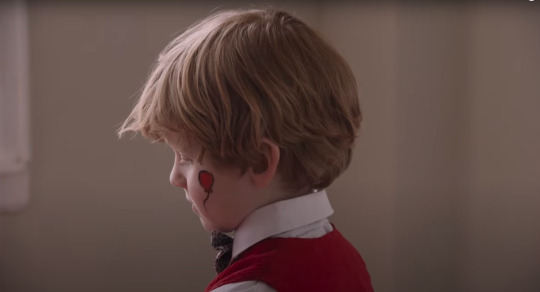
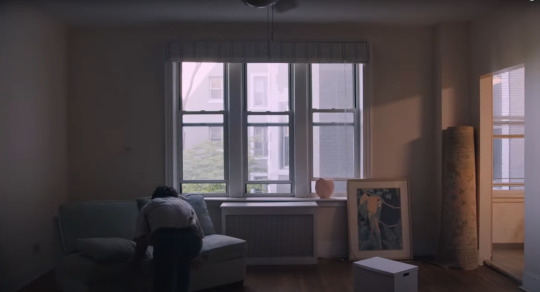
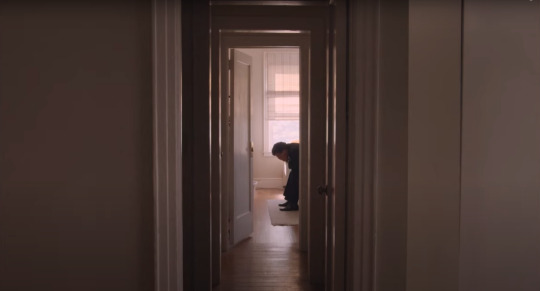
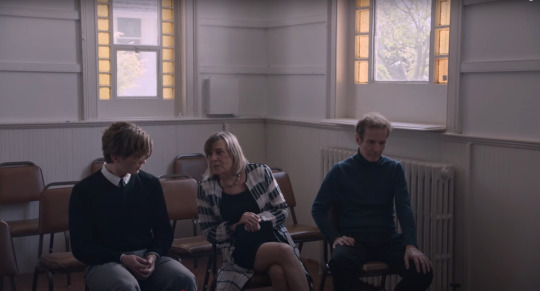
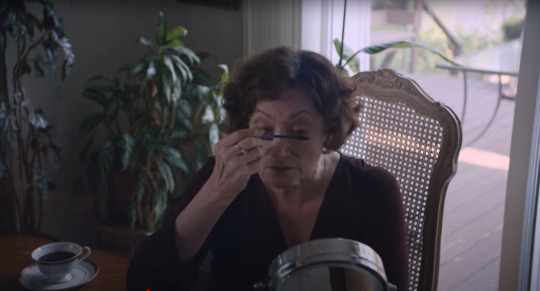
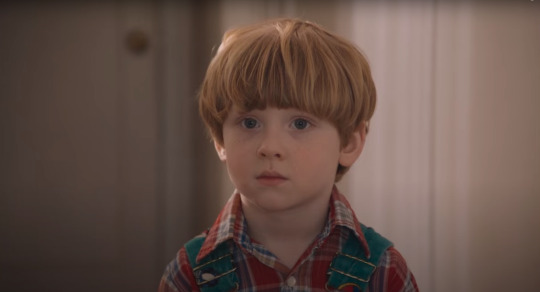
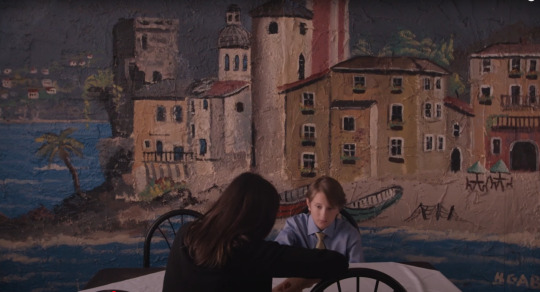
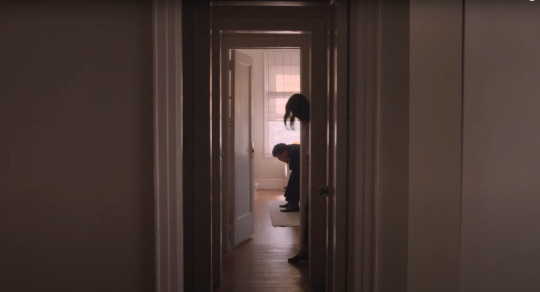
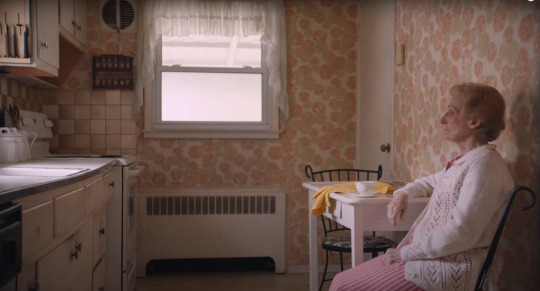
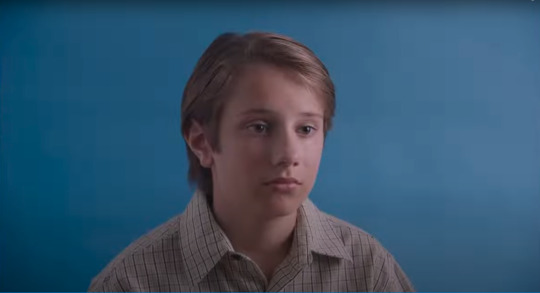
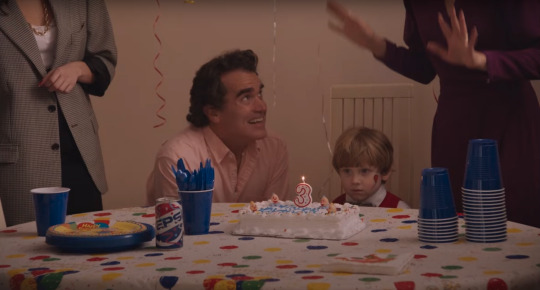
There's extreme cleanliness to what this film looks like. It's a coming-of-age story, running through almost two decades of the protagonist's life, raised by loving yet troubled parents, and surrounded by multiple family members. There's a bunch of stories: painful, unresolvable, and sad, yet told in a way that is unsentimentally beautiful. Archival footage is used as effective time stamps.
#filmafterfilm#mubi#Brian d'Arcy James#Ricky D'Ambrose#Monica Barbaro#Mark Zeisler#Geraldine Singer#Hudson McGuire#Henry Glendon Walter V#Robert Levey II#William Bednar-Carter#viennale
1 note
·
View note
Text
0 notes
Video
youtube
The Cathedral - Ricky D'Ambrose (2021)
trailer
#the cathedral#ricky d'ambrose#2021#2020s#usa#trailer#venice film festival#bart cortright#monica barbaro#indie#drama#brian d'arcy james#cynthia mace#ravenser odd
1 note
·
View note